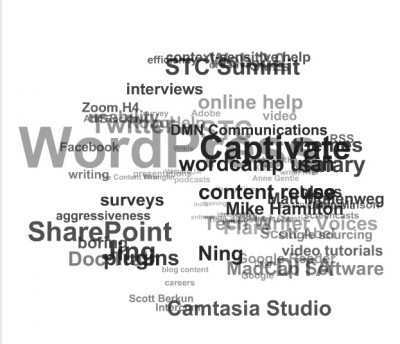WordPress Tip: Rotating Flash Tag Clouds
The rotating flash tag cloud provides a curious approach to tags, no doubt more novel than useful, but still interesting and somewhat worthwhile. The flash cloud shows only 80 tags (any more and it's unreadable).

You can also create a comprehensive set of tags that function as an index. Both arrangements lack usability. I'm never quite sure what to do with tags. My approach has been to treat them like index keywords, so I often tag each post with a handful of freeform tags that come to mind.
However you approach the organization of your content, making 697 posts (the number of posts on my blog) findable on a website that people don't spend more than 5 minutes browsing is a formidable challenge. Common organization schemes, beyond tag clouds (whether "cumulus" or flat, list or other), include category lists, date-based archives, related posts, random posts, most popular posts, most popular posts by category, indexes, category indexes, top 10, article series links, manual arrangements of links, and a search box.
Despite all of these methods, none seems to be especially compelling. Ninety percent of users arrive at the from search or feed, scan the posts on the home page, perhaps the related links on the post they landed on, and then click away. They see less than 5% of the total site content. What do you feel is the best method for organizing blog content?
About Tom Johnson

I'm an API technical writer based in the Seattle area. On this blog, I write about topics related to technical writing and communication — such as software documentation, API documentation, AI, information architecture, content strategy, writing processes, plain language, tech comm careers, and more. Check out my API documentation course if you're looking for more info about documenting APIs. Or see my posts on AI and AI course section for more on the latest in AI and tech comm.
If you're a technical writer and want to keep on top of the latest trends in the tech comm, be sure to subscribe to email updates below. You can also learn more about me or contact me. Finally, note that the opinions I express on my blog are my own points of view, not that of my employer.

